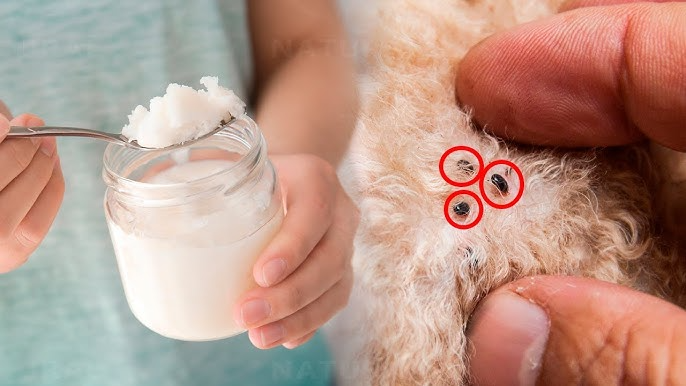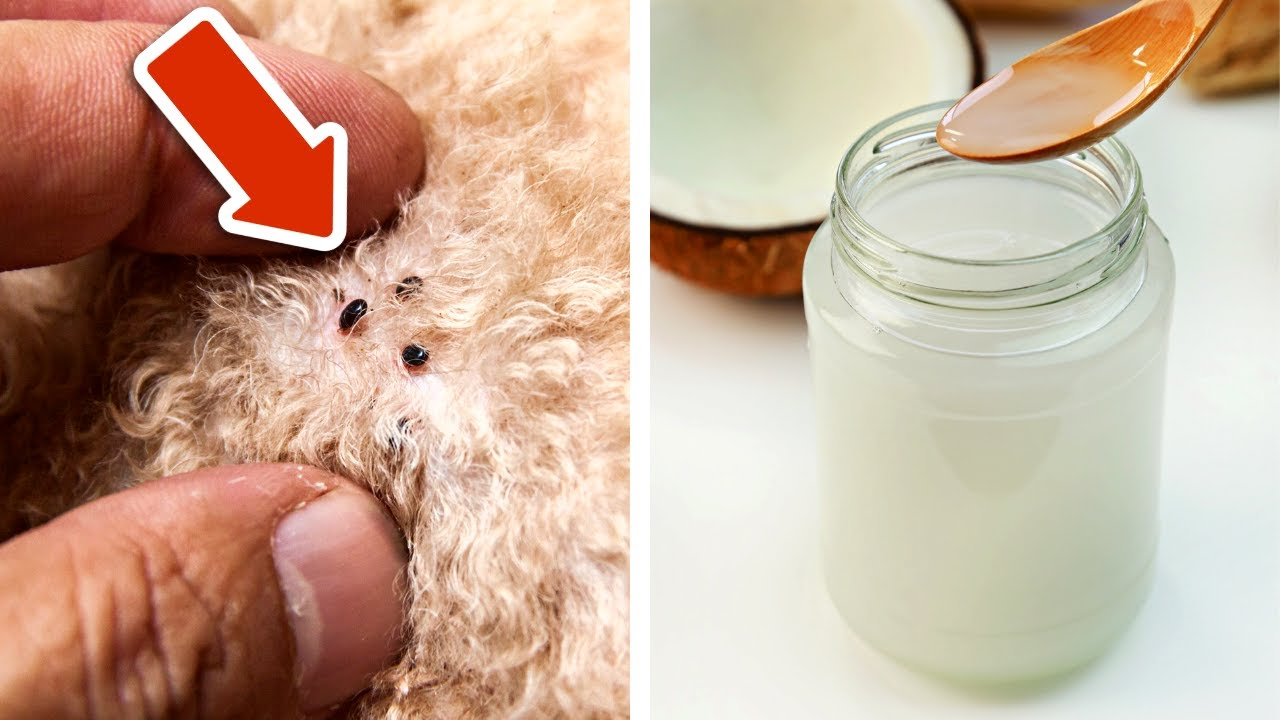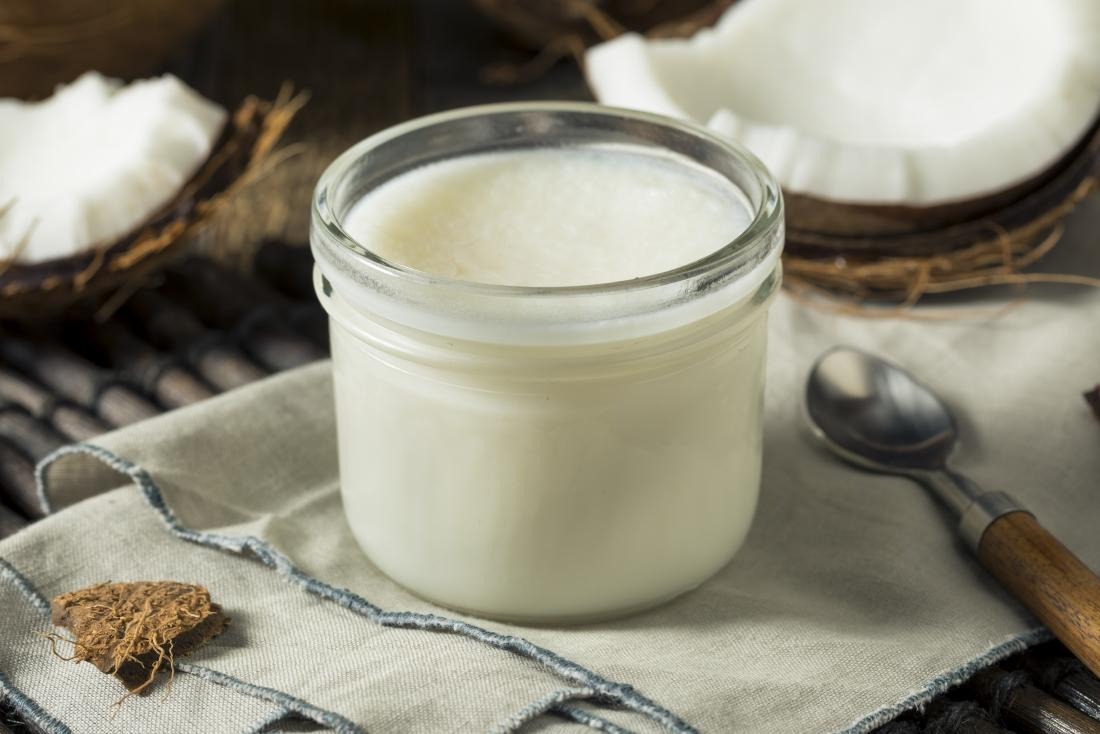Coconut oil is becoming a widely recognized solution for skin problems. It has antibacterial and antifungal properties and is easily available. Although more research is needed to confirm its full effectiveness, coconut oil can be safely used for dogs. Some believe that feeding coconut oil to dogs or applying it to their fur can alleviate symptoms and improve the overall appearance of their coat.

Steps
Give Coconut Oil to Your Dog
Buy pure, high-quality coconut oil. Since the coconut oil will be consumed by your dog, it’s essential to choose the best quality available. Opt for organic coconut oil whenever possible. Avoid refined, bleached, and deodorized coconut oil, as the processing removes vital nutrients.
- High-quality coconut oil can be found in grocery stores, pharmacies, or natural food shops.
Give your dog 1 teaspoon (4 g) of coconut oil for every 4.5 kg of weight, but it’s recommended to increase the dosage gradually. Start by giving them 1/4 of the amount for a few days before slowly increasing it. You can either give the coconut oil directly or mix it with their food.
- Giving your dog too much coconut oil at once can lead to diarrhea or indigestion.
- For example, if your dog weighs 9 kg, start with 1/2 teaspoon (2 g) for a few days, then gradually increase to 2 tablespoons (8 g).

Balance the omega-3 oil intake in your dog’s diet. Consider your dog’s overall diet and avoid over-supplementing with omega-3 fatty acids found in coconut oil. If your dog is also taking omega-3 supplements, alternate between coconut oil and the supplements. Excessive omega-3 intake may cause digestive issues, blood clotting problems, and insulin resistance.
- For instance, if your dog is taking omega-3 supplements 3 days a week, try giving coconut oil on the remaining 4 days.
Consult your vet before using coconut oil for extended periods. Some veterinarians are skeptical about the potential skin benefits of coconut oil for dogs. Therefore, it’s a good idea to talk to your vet before incorporating coconut oil into your dog’s daily diet. If your dog is overweight, the vet may suggest limiting coconut oil use to short-term because each tablespoon (12 g) contains 120 calories.

Apply coconut oil to your dog’s skin
Purchase high-quality coconut oil. Look for pure, organic, and unrefined coconut oil, as it’s more nutrient-rich than refined varieties. Avoid using refined, bleached, and deodorized (RBD) coconut oil. Keep in mind that coconut oil may liquefy in warm places, but it will solidify when cooled.
- Buy high-quality coconut oil from grocery stores, pharmacies, or health food shops.
Warm the oil between your hands. If the coconut oil is in liquid form, scoop 1/2 teaspoon (2 g) into your palm. Rub your hands together until the oil is evenly spread. For solid coconut oil, take a full teaspoon and rub your palms together for about a minute. The coconut oil will melt and liquefy.
Apply the oil to your dog’s skin. Rub the oiled hands onto your dog’s back, lower legs, and belly. Be sure to focus on areas with dry, itchy, red skin or flea bites. Apply coconut oil 1-2 times daily when your dog experiences skin issues.
Continue applying the oil as needed.

Apply coconut oil to your dog’s coat. If your dog has fleas, you should also treat its coat. Add more coconut oil between your hands and work your fingers into your dog’s fur. Don’t forget to treat the fur on your dog’s belly. Apply coconut oil 1-2 times daily while your dog has fleas.
Use coconut oil for multiple days or even weeks. Continue treating your dog until the fleas are gone.
Dress your dog in a shirt. There’s no need to worry if your dog licks the oil off its coat or skin after application, as coconut oil is safe for dogs to ingest. However, if you want to prevent the oil from being licked off, you can put a shirt on your dog. The shirt will keep the oil in place.
- Advice: If your dog dislikes the smell of coconut oil, consider adding a few drops of lavender or lemon essential oil to the coconut oil. Some people use these essential oils to treat skin issues caused by yeast infections.
Source: wikiHow







